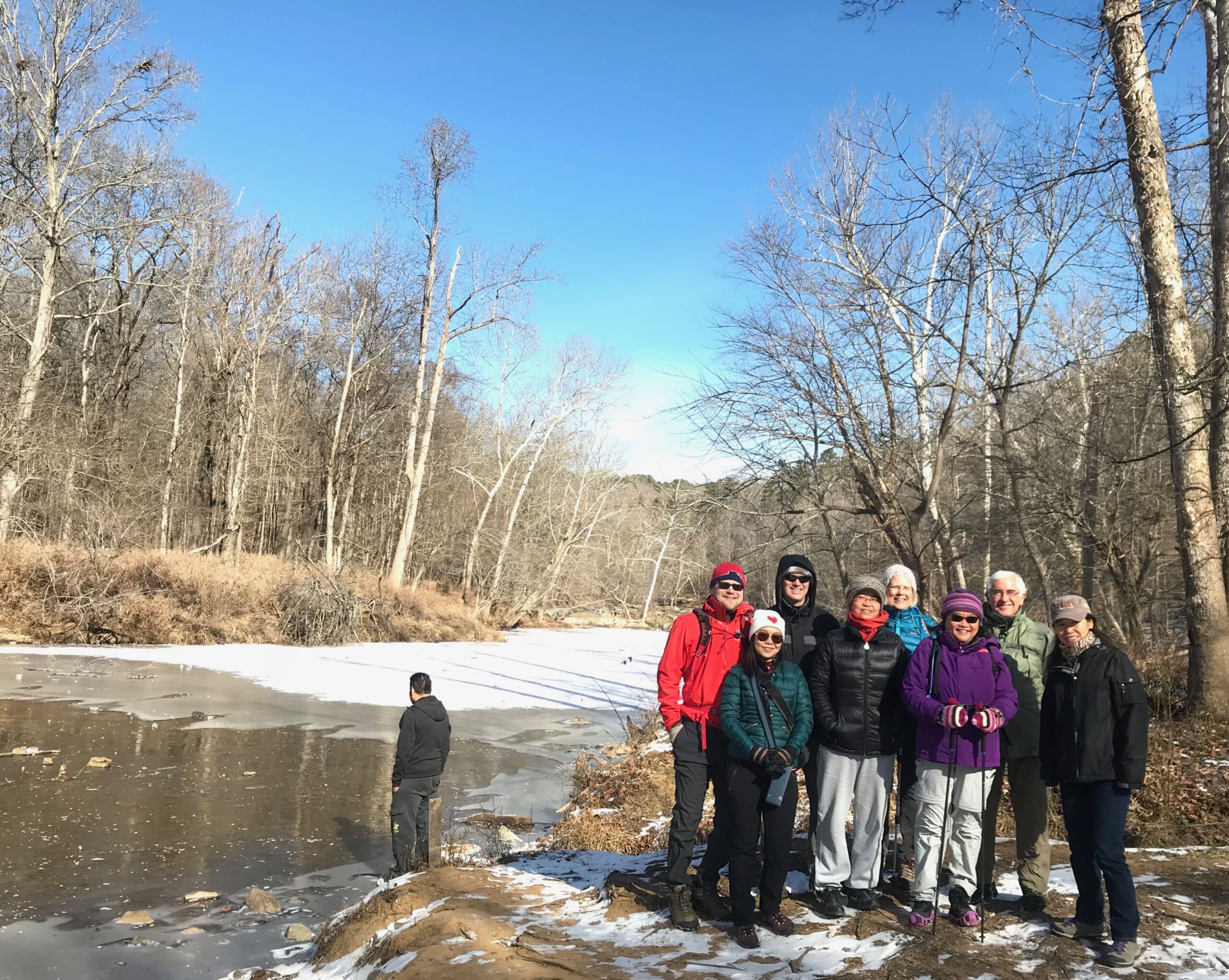
Fear of the cold may have you missing out on some of the best hiking ever. Ev-er!
What is it that kicks in our hibernation instinct come winter? Are we channeling our inner Yogi (Bear)? If so, that’s a big boo boo.
Winter truly can be the best time of year to be on the trail. Here are some tips to help you embrace winter hiking:
1. Stay warm. We start with the obvious, and we won’t stay here for long. Outside Magazine has an involved discussion on the merits of layering, with helpful tips to keep in your back pocket. Here’s the short course:
- Base layer: First, start with the base layer. It is the layer of clothing next to your skin. Your base layer should be thin and made of a synthetic or high-tech wool that wicks the moisture from your body. Dry skin = warmer skin. It should not, under any circumstances, be cotton. Sweat sticks to cotton and the sweaty cotton sticks to your skin. Then, your body expends lots of energy trying to warm your cold, sweaty skin, and you run the risk of hypothermia.
- Insulating layer: Next, use a slightly heavier layer that helps create a pocket of air warmed by your body between it and the base layer. Synthetic is preferable, wool is again preferred.
- Outer shell: Last comes the outer shell. This is especially important when the weather gets cold (30s and lower) and there’s wind. An outer shell is a slick fabric that will shed rain and wind. A good outer shell will have some sort of vent system to keep condensation from building inside. Zippers in the armpits is one popular option as is mesh under the arms and along the side of the torso.
2. Drink. With winter hiking, you may not feel thirsty. However, you need to drink for these reasons: breathing cold, dry air drains the body of liquid. We do sweat, although the cold quickly turns it into vapor, so we don’t realize it. You may feel less thirsty but your active body still needs fluids to operate.
3. Snack. More important in cold weather because your stores run down more quickly. Keep ‘em handy, in your pack’s hip belt, for instance.
4. Start cool. Too many folks start a winter hike all bundled up. Then, five minutes down the trail they’re sweating. Instead, right before heading out, strip off that outer layer. You’ll be cool for a minute or two, but should warm up quickly.
5. Layer up at breaks. Just as you warm up quickly at the start of a hike, you cool down quickly when you stop hiking. That includes snack breaks or extended breaks to check out a view. If you’re stopping for more than a minute or so when winter hiking, grab a layer out of your pack and throw it on.
6. Regulate your thermostat with hat & gloves. An easy and efficient way to regulate body heat is with hat and gloves. You can quickly lose heat through your head and hands. Start your hike with a wool cap and gloves to keep heat from escaping. Once you warm up, try shedding one or the other. After a few minutes, you’ll be able to see what effect the change is having.
7. Hike in the sun. On an especially cold day you can up your odds of staying warm by choosing a trail that lets in a bit more light. That can mean picking a trail that you know has more hardwoods, which have shed their umbrella of leaves for winter, rather than hiking under evergreen pines. Try looking for trails that are double-track, which are wider and thus have a wider opening in the canopy, rather than narrower single-track. A couple ways to distinguish between the two on a map: a wider double-track may be marked with parallel dashed lines, and trails marked as “multi-use,” especially if they allow horses, are more likely double-track.
8. Hike in the sun II. Next, pick a trail with a southern exposure. You’ll need to know how to read a topo map to pick a south-facing trail. Or have the number for the local ranger station handy.
9. Hike early. You’ll want to take advantage of the sun as much as possible when winter hiking. So start early, when the trail is still be in shadows, and finish while the sun is at its brightest, rather than finishing as the sun is setting and the air is cooling.
10. Hike early II. Also, remember that the sun sets early this time of year. In the winter, the sun usually sets around 5:30 p.m., with diminishing light remaining for another half hour. Note that with the winter sun deeper into the southern sky, you will lose light hiking the north side of a mountain even earlier. Once the sun sets, the temperature can drop like a rock.
Our species isn’t designed to hibernate, folks. Follow a few simple rules and get your hiking season off to a strong — and enjoyable — start.
Winter Hiking Resources
Winter hiking: Need more incentive? Check out all the other reasons to hike in the winter.
Looking for a hike? Check out our GetHiking! Resource Page.
